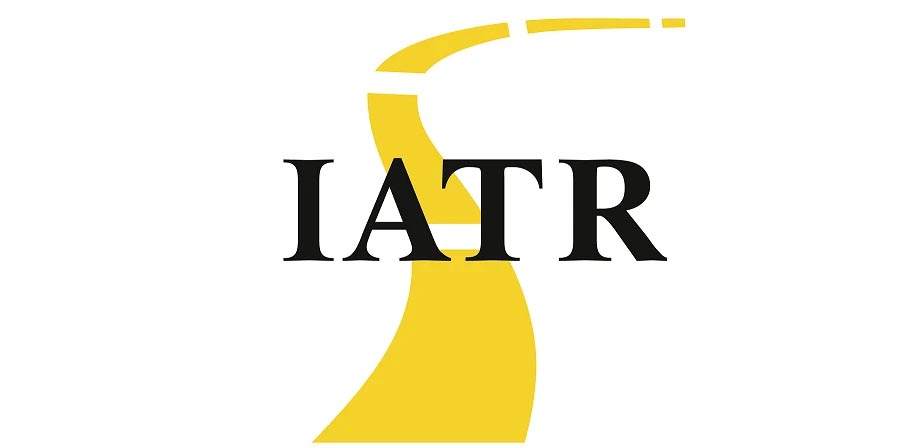The Future of Chauffeur Services

Key Takeaways from the International Association of Transportation Regulators' Modernizing Taxi Regulations Report

As the landscape of the transportation industry continues to evolve, traditional taxi and for-hire vehicle services, including professional chauffeur companies, face both unprecedented challenges and opportunities. The International Association of Transportation Regulators (IATR) recently released (Updated March 2024) a comprehensive report, Modernizing Taxi Regulations, following its 36th annual conference in September 2023. This report brings together insights from regulators, academics, and industry stakeholders, aiming to reshape how taxi and for-hire vehicle services are regulated in the era of app-based ride-hailing giants like Uber and Lyft.
For professional chauffeurs and transportation companies, this report offers a detailed roadmap of how regulatory frameworks are adapting to modern technologies and consumer demands. Whether you operate a traditional taxi service or run a high-end chauffeur business, the recommendations outlined in this report will impact how you navigate the industry moving forward. Here's why you should care: regulatory flexibility could mean new business opportunities, better operational efficiency, and reduced costs—but it also brings about changes you need to be aware of to stay competitive.
1. The Push Toward Electric Vehicles: A Double-Edged Sword
One of the most significant shifts highlighted in the report is the increasing pressure to adopt Electric Vehicles (EVs). For professional chauffeurs, this could be a game-changer—but also a major hurdle. EVs are seen as the future of urban mobility, promising reduced emissions and long-term cost savings. However, as the IATR report points out, upfront costs are a significant barrier. EVs typically cost $6,000 to $8,000 more than their internal combustion counterparts, with additional expenses for charging infrastructure adding another $3,000 or more (NYC Taxi & Limousine Commission: Charged Up! TLC’s Roadmap to Electrifying the For-Hire Transportation Sector In New York City).
This might not seem feasible for all chauffeurs, especially those operating small fleets. However, incentives could ease this burden. For example, in Greece, the government offers a subsidy of up to €17,500, along with additional support for decommissioning old taxis (Greece introduces new subsidy programme for electric taxis). While not every country offers such generous programs, the trend toward incentivizing green vehicles is likely to grow, and chauffeurs who adopt EVs early could gain a competitive edge in markets that prioritize green transportation.
2. Flexibility in Fare Control: An Opportunity for Innovation
Fare control has long been a source of contention in the taxi and for-hire vehicle industry. Traditionally, fixed rates and metered fares limited flexibility, making it difficult for chauffeurs to adjust pricing based on demand or offer premium services. The IATR report suggests a move toward dynamic pricing for pre-booked trips, similar to the model used by TNCs like Uber.
This means that chauffeurs could offer upfront pricing, flat rates, and surge pricing for high-demand times, providing more control over revenue. In cities like Vienna, pre-booked fares are allowed to fluctuate within a +/- 20% range from standard rates( www.vienna.at). For high-end chauffeurs, this opens the door to offering specialized pricing for premium services like airport pickups or executive transport, providing flexibility that wasn’t available under rigid fare controls.
For street-hail taxis and taxi stand pickups, regulated maximum rates are still recommended to protect consumers, but pre-booked trips have the potential for much greater pricing freedom. For chauffeurs, this could mean higher profitability during peak times and the ability to differentiate themselves through value-added services, all while offering more transparent pricing to customers.
3. Passenger Pooling: More Trips, More Efficiency
Passenger pooling, or allowing multiple passengers with compatible destinations to share a ride, could be a major advantage for chauffeurs. The IATR report cites research from MIT showing that carpooling apps could reduce taxi traffic by 75% without significantly increasing travel time(MIT News). This efficiency can lead to more trips per hour, reduced fuel consumption, and higher overall earnings.
For professional chauffeurs, particularly those operating in urban areas with heavy traffic, passenger pooling could increase the number of fares without adding to congestion. Additionally, it offers a way to service more passengers during off-peak hours or in under-served areas where demand might not justify solo rides. In markets where this is allowed, it offers a new revenue stream and a way to optimize the use of time and vehicle resources.
4. Digital Soft Meters: Modernizing Payment and Pricing
Gone are the days of clunky, outdated taximeters. The report advocates for the widespread adoption of GPS-based digital meters, also known as soft meters. These allow for real-time fare calculations and dynamic pricing adjustments, providing greater flexibility for both chauffeurs and passengers.
For chauffeurs, soft meters integrate seamlessly with payment systems and trip-planning tools. This means passengers can see upfront pricing, pay via mobile wallets, and receive digital receipts—all through the same system. By adopting soft meters, chauffeurs can provide a more seamless, transparent experience that matches the convenience offered by TNCs (Modernizing Taxi Regs).
Cities like Los Angeles and San Francisco are already allowing soft meters, while other jurisdictions are following suit. For chauffeurs, particularly those working in cities that have been slower to adopt this technology, the transition to soft meters represents a significant opportunity to modernize operations and streamline payments.
5. Advertising: Turning Your Vehicle into a Revenue Stream
The report highlights a largely untapped revenue stream for chauffeurs: interior and exterior vehicle advertising. By allowing ads on taxis and other for-hire vehicles, chauffeurs can supplement their income without needing to increase fares.
Cities like Chicago and Hong Kong already allow advertising on both the interior and exterior of vehicles, provided it meets safety and visibility standards (Hong Kong Transport Department ). In-vehicle advertising, such as seat-back tablets, can even offer passengers entertainment or real-time information, enhancing the customer experience while generating additional revenue.
For chauffeurs, especially those driving luxury or high-visibility vehicles, this can be an excellent way to add value to your service without increasing operational costs. However, advertising must be done carefully to maintain the vehicle’s aesthetic and ensure passenger comfort.
6. Simplified Market Entry: Easing the Path for New Drivers
One of the more exciting recommendations in the IATR report is the push to simplify the licensing and market entry process for chauffeurs. In many cities, licensing and vehicle regulations are overly complex, creating barriers for new drivers or those looking to expand their fleet. The report advocates for eliminating unnecessary distinctions between market segments like taxis and private-hire vehicles, which could allow chauffeurs to offer a wider range of services without needing multiple permits (Modernizing Taxi Regs).
For example, in Victoria, Australia, a simplified registration system led to a 70% increase in for-hire vehicles (Modernizing Taxi Regs). This approach reduces administrative burdens and opens the door to more competition and innovation, benefiting both chauffeurs and consumers.
7. Vehicle Longevity: Keep Your Fleet Running Longer
For many chauffeurs, one of the most costly aspects of the business is the need to frequently replace vehicles to meet stringent age and mileage restrictions. The IATR report recommends easing these restrictions, allowing well-maintained older vehicles to stay in service longer(Modernizing Taxi Regs).
This could mean significant savings for chauffeurs who operate high-end, well-maintained vehicles that are still in excellent condition but don’t meet arbitrary age limits. For those with smaller fleets, this reduction in vehicle turnover can free up capital for other business improvements, such as upgrading technology or adding new services.
8. Embracing E-Hail Integration: A Win-Win for Chauffeurs
Another key recommendation is for taxis and for-hire vehicles to integrate with e-hail platforms like Uber and Lyft. In cities like New York and San Francisco, partnerships between taxis and TNCs allow chauffeurs to accept ride requests through multiple platforms, increasing trip volume and income (Modernizing Taxi Regs).
This kind of integration could be a major win for chauffeurs, who can access the large customer base of TNCs while still maintaining the ability to provide higher-end, personalized services. By having access to both taxi apps and TNCs, chauffeurs can maximize their time on the road and reduce downtime between trips.
9. Passenger Safety and Service Quality: Balancing Regulation and Flexibility
The report emphasizes the need for regulation to focus on safety and consumer protection without overregulating service quality. This means giving chauffeurs the flexibility to distinguish themselves through value-added services like in-vehicle amenities and branded booking apps (Modernizing Taxi Regs).
At the same time, maintaining a high standard for safety, vehicle maintenance, and customer service is crucial. As the industry becomes more competitive, professional chauffeurs who offer these additional services will be better positioned to attract repeat business, particularly in the premium market.
10. Training and Licensing: Streamlining Processes for Chauffeurs
Finally, the IATR report recommends streamlining the driver licensing process to remove unnecessary administrative burdens that limit the number of qualified chauffeurs on the road. This includes moving the process online, reducing duplicative requirements, and simplifying background checks (Modernizing Taxi Regs).
In Los Angeles, for example, recent reforms have made it easier for new chauffeurs to get licensed and start earning, with a focus on online applications and streamlined onboarding(https://ladot.lacity.gov/dotnews). For chauffeurs, this means less time dealing with paperwork and more time on the road, improving operational efficiency.
Conclusion: A New Era for Professional Chauffeurs
The IATR's Modernizing Taxi Regulations report makes it clear that the future of transportation is evolving, and professional chauffeurs must adapt to these changes to remain competitive. From embracing electric vehicles and leveraging dynamic pricing to integrating with ride-hailing platforms and exploring new revenue streams through advertising, chauffeurs have more opportunities than ever to modernize their services.
At the same time, the easing of vehicle restrictions and the streamlining of licensing processes will reduce operational costs and barriers to entry, making the industry more accessible and profitable for those willing to innovate. While some regulatory changes may pose challenges, particularly around electric vehicle adoption, the report provides a roadmap for chauffeurs to succeed in an increasingly competitive landscape.
Ultimately, the key to thriving in this new era is flexibility—whether it's in pricing, vehicle options, or service offerings. By staying informed and adapting to these regulatory shifts, professional chauffeurs can position themselves at the forefront of the modern transportation industry, delivering high-quality, safe, and innovative services to their customers.
This report signals that it’s not just about surviving the shifts in the market, but about using them to create new avenues for success. For professional chauffeurs, the future is bright for those who are ready to embrace it.


